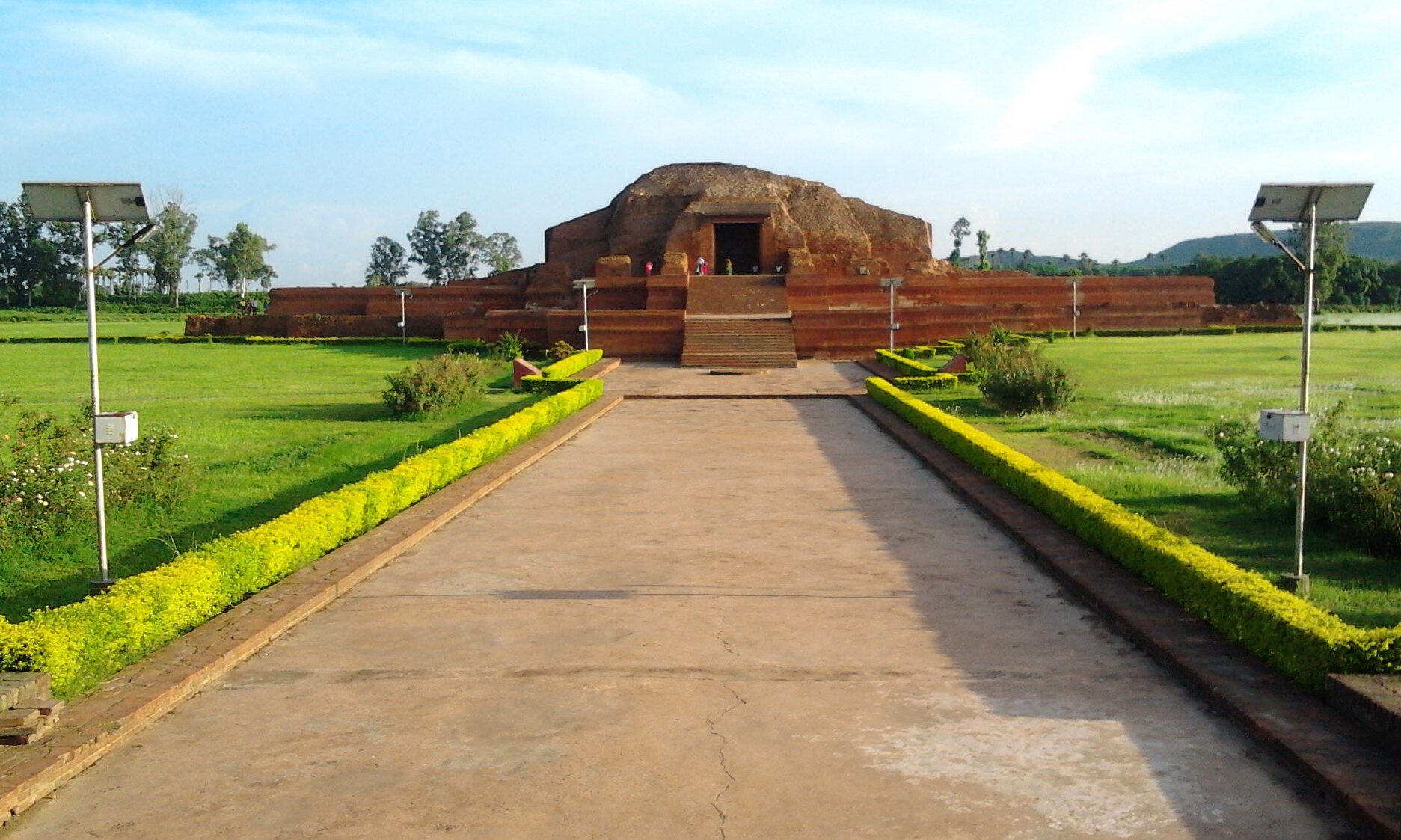A roadside grave is said to be that of Miran, the son of the erstwhile Nawab of Bengal, Mir Jaffar, who plotted against Siraj-ud-daulah. Its simplicity is unusual in that era of large elaborate tombs and mausoleums. This tomb is situated in Mahajantoli of Rajmahal with pin code 816109. This Tomb is on the verge of extinction with encroachment being the major problem.
Another important tomb is a few kilometers away in Begampur. In need of restoration like so many of the other structures in the area, this 17th century tomb is said to be the first octagonal tomb in Bengal.
Also worth seeing in Begumpur, is the Sirsi mosque and Shah Shuja’s pleasure retreat.
Beyond the western wall of the Jami Mosque is a small temple and a well.
Half a kilometer from Jami Masjid, near the Akbari Mosque, there is an old ruined hammam, said to have been part of Raja Man Singh’s Palace.
A fine octagonal 17th century tomb at Begampur, and the well-preserved Junima Mosque, which has a fine carved slab of black basalt in the threshold of the central bay.

Other notable structures include the Choti Mosque; a rectangular, three-bay structure with a single dome.
Taksal of Jagat Seth, notable banker of Bengal,
There are the remains of ice-making tools dating back to Mughal times. It has been said that ice was prepared and effectively preserved to ensure a year-long supply. it has been recorded that the Nawabs of Bengal received their supply of ice and mangoes from Rajmahal regularly till the 1720s.
Few are aware that the Mughal bridge (72 m by 72 m), which is about 5 km from the town, on the road from Sahibganj to Rajmahal, close to the Jami Mosque, was built by Raja Man Singh. It is in brick and stone still in use today. It has fine, massive diamond-shaped piers carrying six arches with two circular bastions at each end.
At a considerable distance from the Sang-i-dalan is a ruin called the Phulbari (flower garden).
Near this phulbari, is the tomb of Bakht-Homa, widow of Shaista Khan built on 4 July 1860.
Machhli Bhawan, Anand Sarovar and several others well decorated constructions, which can be easily equated with any other capital cities of Mughals were there in Rajmahal. Shah Shuja made one wooden palace at the cost of Rupees 25 Lakhs, But, majority of these had been either demolished or burnt down during the war of succession in 1657-58 AD. The Broken walls and brick laid roads as well as several other remains confirm the magnificent nature of Rajmahal.
On the way to Kanhaiya Sthan from Rajmahal we come across a small old bridge called ‘Litti Pul‘ . It is said that the small road bridge was constructed by the individual effort and savings of an old lady who earned her savings by selling ‘Litti’ (a kind of Chapaati with Sattu (powdered gram) stuffed in Atta). That’s why it is named as ‘Litti Pul’




















